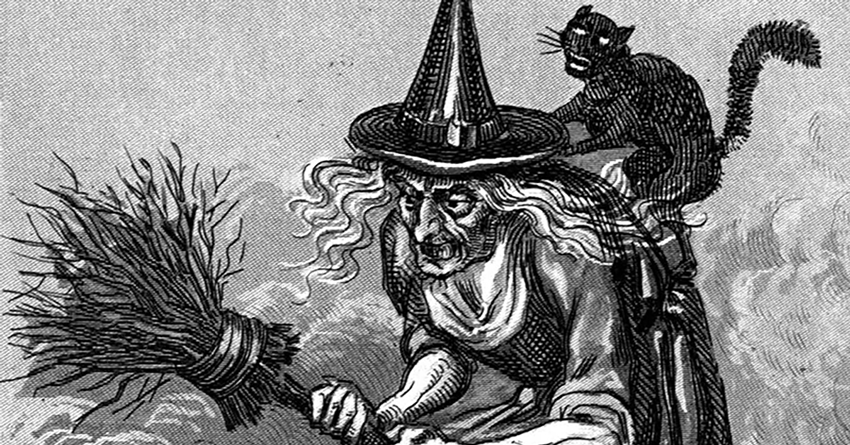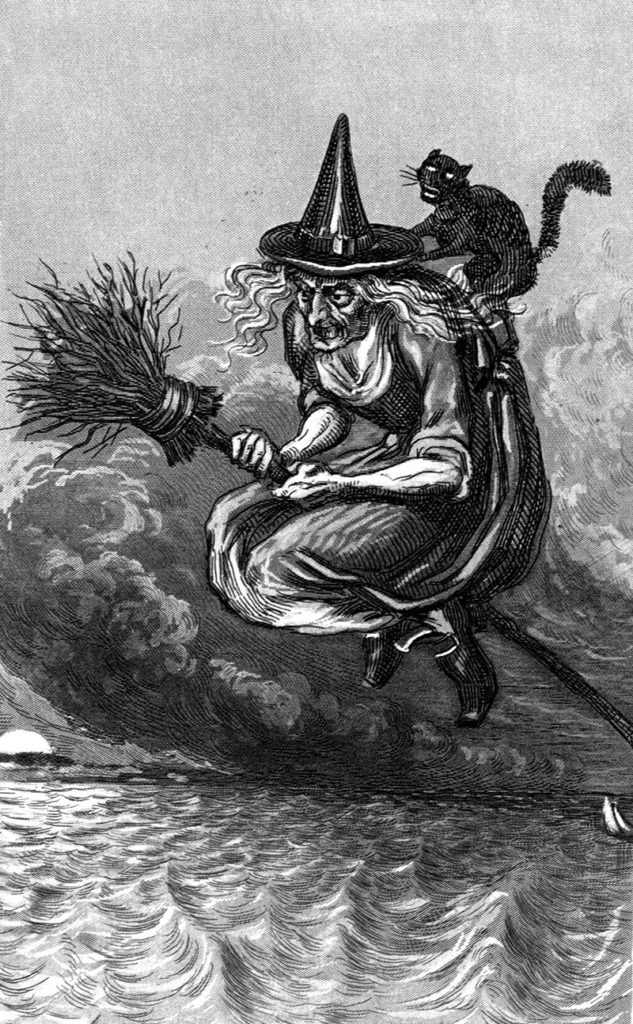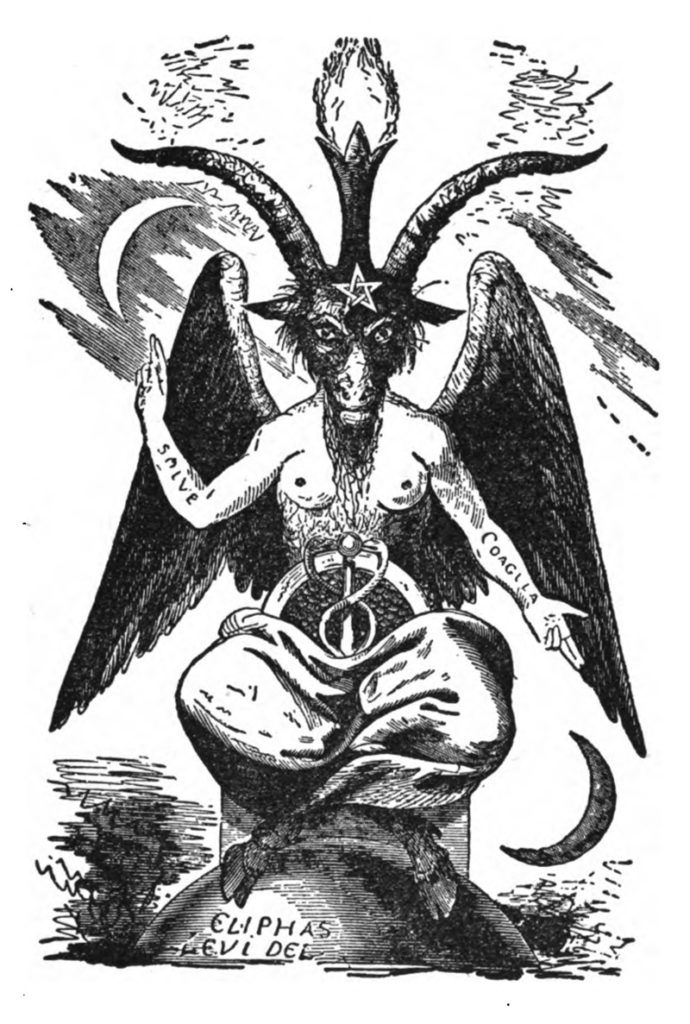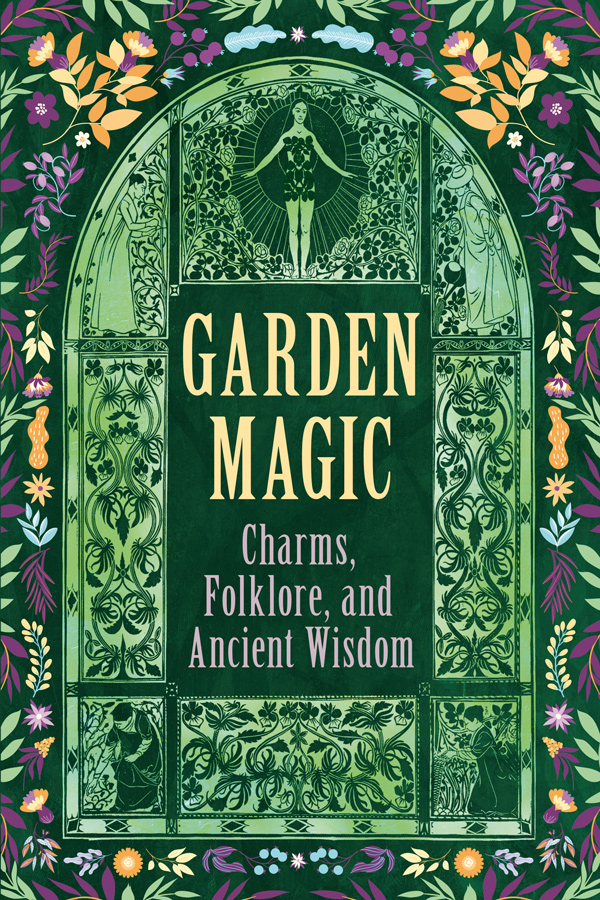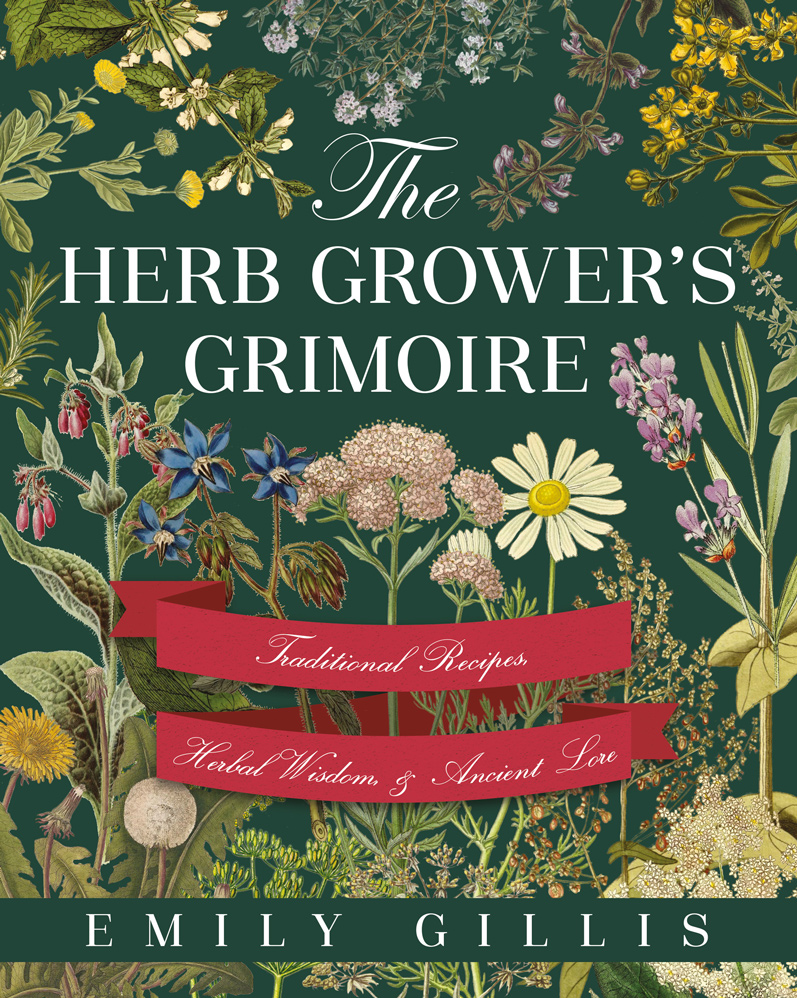Witchcraft is the use of magical faculties, most commonly for religious, divinatory, or medicinal purposes. The belief in and practice of magic has been present since the earliest traces of civilisation and continues to have an important role in many cultures today.
The concept of witchcraft has long been utilised as a scapegoat for human misfortune. This was particularly the case during the early modern period in Europe when witchcraft came to be seen as part of a vast, diabolical conspiracy of individuals in league with the Devil. This eventually led to large-scale witch hunts. Join us as we delve into the history of witches and witchcraft and explore the often misunderstood folklore of black magic
The History of Witchcraft
Witches in Folklore and Literature
Witches and witchcraft have long been objects of fear in traditional folkloric tales. The Ancient Greeks believed in a deity named ‘Hecate’, who was said to be the god of all witches, as well as hexes, poisonous plants, and sorcery. One of the other names she was known by, ‘Chthonia’, literally translates to ‘of the underworld’.
Appearing in Greek mythology is the witch Circe. In Homer’s Odyssey, she lives on an island named Aeaea, where she turns passing sailors into wolves and lions. Odysseus only narrowly escapes transformation due to the protection of a magical plant.
Indian folkloric tradition has an altogether darker tale, that of ‘Chedipe’, a woman who died during childbirth. She was said to ride on a tiger at nightfall and enter people’s houses. Without waking a soul, she would suck the life out of each man through his toes.
The most famous English portrayal of witchcraft is in Shakespeare’s Macbeth. The three witches, fates, or weird sisters are inspired by the tale of the Moirai and serve as the first characters encountered by the audience. They act as agents of destruction, sending Macbeth into a spiral of corruption and obsession.
Types of Witches Throughout History
Throughout history, various types of witches have emerged, each with their unique practices, beliefs, and areas of focus. More recently defined types of witchcraft revolve around harnessing the natural powers of the Earth and include green witches, crystal witches, and folk witches.
Green Witches
Green witches, also known as kitchen, plant, or hedge witches, have a deep connection with nature and the Earth’s cycles. They often work with herbs, plants, and natural elements to heal, create potions, and perform magical rituals. Green witches may have extensive knowledge of herbalism, gardening, and wildcrafting. Their craft revolves around fostering a harmonious relationship with the environment and using nature’s gifts for magical purposes.
Crystal Witches
Crystal witches focus on the energies and properties of crystals and gemstones. They believe that crystals possess unique vibrations and can be used to harness and direct energy for various purposes, such as healing, protection, divination, and manifestation. Similarly, cosmic witches are drawn to the celestial and cosmic aspects of the universe. They study astrology and planetary movements to align their magical practices with the positions of celestial bodies. Cosmic witches often work with lunar and planetary energies, using the phases of the moon and the positions of planets to guide their spellcasting and rituals.
Folk Witches
Folk witches draw their inspiration from traditional folk practices, often rooted in local customs, superstitions, and cultural beliefs. They blend folk magic, passed down through generations, with their unique interpretations and rituals. Folk witches may use charms, talismans, and protective symbols to ward off negative energies and bring blessings into their lives. Their practices can vary significantly based on regional traditions and cultural influences.
Enter a realm of ancient herbal wisdom with The Herb Grower’s Grimoire, and discover the transformative power of the Earth’s most enchanting plants.
Religion, Black Magic, and the Occult
In early modern European tradition, witches were stereotypically, although not exclusively, women. A strong belief in witchcraft was widespread among the population and was associated with the goddess Diana. With the advent of Christianity, however, such beliefs were dismissed as ‘diabolical fantasies’ by medieval authors. Early converts to Christianity looked to the clergy to work magic more effectively than the old methods under Roman paganism. The newfound religion provided a methodology involving saints and relics, similar to the gods and amulets of the Pagan world. The Protestant explanation for witchcraft, such as those typified in the confessions of the Pendle witches (a series of famous witch trials that took place in Lancashire in 1612), commonly involved a diabolical appeal to the intervention of the spirits of evil.
Black Magic is usually referred to as the use of witchcraft for evil and harmful purposes and is the dark, or ‘left-hand path’, to its counterpart White Magic. The witches or wizards engaged in such practices were alleged to reject Jesus and the sacraments, observe ‘the witches’ sabbath’ (performing infernal rites that often parodied sacraments of the Church), and pay Divine honour to the Prince of Darkness, in return receiving from him preternatural powers.
It was a folkloric belief that a Devil’s Mark, like the brand on cattle, was placed upon a witch’s skin by the devil to signify that this pact had been made. The Church and European society were not always so zealous in hunting witches or blaming them for misfortunes. Saint Boniface declared in the eighth century that belief in the existence of witches was un-Christian. Emperor Charlemagne further decreed that the burning of supposed witches was a pagan custom that would be punishable by death. In 820, the Bishop of Lyon repudiated the belief that witches could make bad weather, fly in the night, and change their shape. This denial was accepted into Canon Law until it was reversed in later centuries as witch hunts gained force.
With the damnation of witches a widely accepted stance, scholars such as Arthur Edward Waite and Montague Summers became known as masters of the occult, having published widely praised texts exploring the subject. Summers’ seminal text The History Witchcraft and Demonology, published in 1926, gives a religiously biased overview of the subject, including a chapter on demonic possession and full exorcism rites:
‘In the following pages I have endeavoured to show the witch as she really was – an evil liver: a social pest and parasite: the devotee of a loathly and obscene creed: an adept at poisoning, blackmail, and other creeping crimes: a member of a powerful secret organisation inimical to Church and State: a blasphemer in word and deed, swaying the villagers by terror and superstition: a charlatan and a quack sometimes: a bawd: an abortionist: the dark counsellor of lewd court ladies and adulterous gallants: a minister to vice and inconceivable corruption, battening upon the filth and foulest passions of the age.’
– Quote by Montague Summers, The History of Witchcraft and Black Magic
Salem and Other Witch Trials
In the late 1500s, the prosecutions for the crime of witchcraft reached an all-time high when an estimated 50,000 people were burnt at the stake. This included crimes of any magical nature, even fortune-telling. Trials were held throughout Europe between 1560 and 1630, and included people of all class, gender, and age. The Trier Witch trials were perhaps the largest documented trials in history. They resulted in the recorded executions of nearly 400 people, although the exact figure is suspected to be much higher.
The most well-known trials are those that took place in Salem, Massachusetts, USA, in 1692. They began ‘after a group of young girls in Salem Village, Massachusetts, claimed to be possessed by the devil and accused several local women of witchcraft‘. More than 200 people were accused of practising witchcraft. By the mid-seventeenth century, witch trials had begun to fade out, making Salem one of the deadliest witch hunts in the history of colonial North America due to the provocative nature of New World mass hysteria.
Discover more books on Witchcraft
Witchcraft and Wicca
It should be noted that not all witches were assumed to be harmful practitioners of their craft. In England, the provision of curative magic was the job of a witch doctor, also known as a cunning man, white witch, or wise man. The term ‘witch doctor’ was in use in England before it came to be associated with Africa. ‘Toad Doctors’ were also credited with the ability to undo evil witchcraft.
Since the twentieth century, witchcraft has become a designated branch of modern Paganism. It is most notably practised in the Wiccan and witchcraft traditions, which are generally portrayed as revivals of pre-Christian European ritual and spirituality. They are understood to involve varying degrees of magic, shamanism, folk medicine, spiritual healing, calling on elementals and spirits, veneration of ancient deities and archetypes, as well as attunement with the forces of nature. While there is no authority figure, the religion follows a series of core beliefs and principles that were originally determined in the first half of the twentieth century by early High Priestess Doreen Valiente. The religious celebrations follow the cycles of the sun and moon, both female and male deities, and often involve the ritual practice of magic. Today, both men and women are equally termed ‘witches’.

